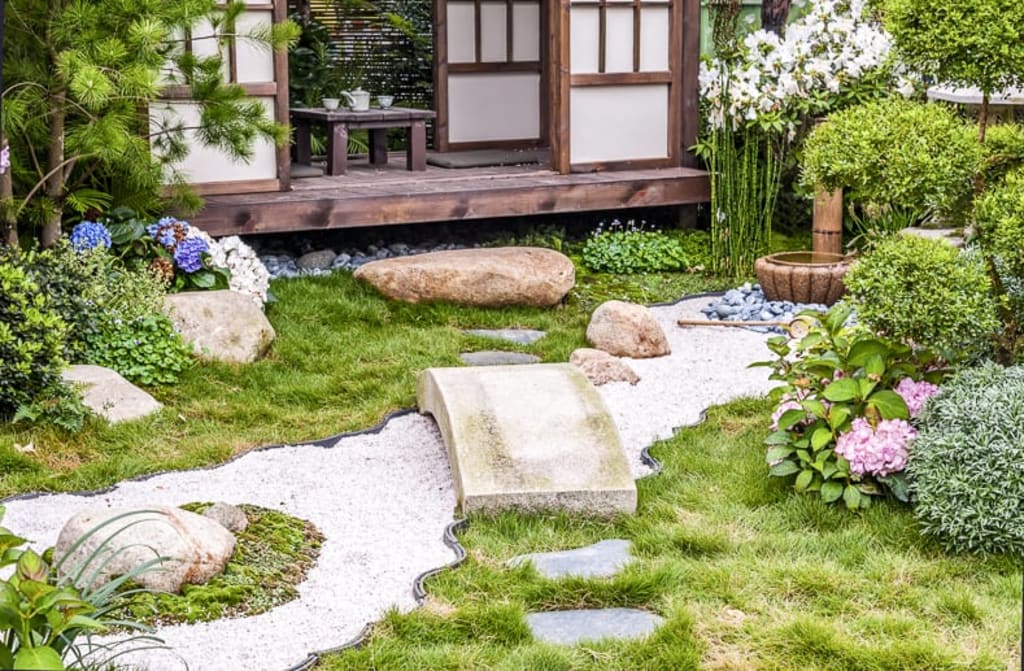The Art of Creating a Zen Garden: DIY Tips and Ideas
Have you ever wanted to create an aesthetic garden?

In our fast-paced and hectic lives, finding moments of peace and tranquility is essential. One way to create a serene oasis at home is by designing a Zen garden. With its minimalist aesthetic, soothing elements, and focus on mindfulness, a Zen garden can be a perfect addition to your outdoor or indoor space. In this article, we will delve into the art of creating a Zen garden, providing you with DIY tips and ideas that will help you cultivate a sense of calm and serenity in your own sanctuary.
Choose the Right Space: The first step in creating a Zen garden is selecting the right space. Consider the available area in your yard or even indoors. Look for a peaceful and quiet corner that receives ample natural light. It could be a small section of your backyard, a balcony, or even a dedicated room inside your home. The size of the space doesn't matter as much as the atmosphere it provides. Sarah, a busy professional, transformed a neglected corner of her backyard into a Zen garden retreat. She chose an area near a tree, away from noise and distractions, and created a cozy nook where she could unwind and find solace amidst nature.
Embrace Minimalism: Zen gardens are known for their minimalistic design, which promotes simplicity and clarity. Keep the design clean and uncluttered, focusing on essential elements. Use a limited color palette, typically consisting of earthy tones such as beige, gray, and green. Avoid overly ornate or decorative features, and let the natural beauty of the garden take center stage. David, a Zen garden enthusiast, designed his outdoor space with simplicity in mind. He opted for gravel pathways, carefully raked to create flowing patterns. He incorporated a few well-placed rocks and minimalist plantings, ensuring that each element had a purpose and contributed to the overall tranquility of the space.
Incorporate Natural Elements: Nature plays a vital role in Zen gardens, and incorporating natural elements is essential. Use gravel or sand to represent water or flowing streams. Introduce rocks and stones to symbolize mountains or islands. Arrange plants strategically to create a sense of balance and harmony. Incorporate elements like bamboo, moss, or bonsai trees to add texture and evoke a sense of Zen-inspired nature. Olivia, a Zen garden enthusiast with limited outdoor space, created an indoor Zen garden on her balcony. She incorporated a small water feature with a cascading fountain, using carefully placed stones to guide the flow of water. She added miniature bamboo plants, a Zen symbol of resilience and flexibility, to bring a touch of nature indoors.
Create a Meditation Area: A Zen garden is an ideal space for meditation and contemplation. Dedicate a specific area within your garden where you can sit and practice mindfulness. This can be a simple meditation cushion or a comfortable bench strategically placed in a peaceful corner. Add a small table or altar where you can place items that inspire tranquility, such as candles, incense, or a Zen garden miniature rake. Jason and Lisa, a couple passionate about Zen practices, created a meditation area in their backyard Zen garden. They placed a wooden bench under a canopy of trees, providing shade and a serene atmosphere. They added a small altar with a ceramic Buddha statue and incense, creating a sacred space for quiet reflection and meditation.
Use Sound Elements: Sound plays an important role in Zen gardens, contributing to the overall atmosphere of serenity. Incorporate sound elements like wind chimes or a small waterfall to create a gentle and soothing ambiance. The sound of running water or the soft tinkling of chimes can help drown out noise from the surroundings and create a more peaceful environment. Michael, a Zen garden enthusiast living in an urban area, installed a bamboo water fountain in his Zen garden. The gentle trickling of water provided a soothing soundtrack and masked the sounds of the bustling city, allowing him to find a sense of calm amidst the urban chaos.
Creating a Zen garden is an art that embraces simplicity, mindfulness, and tranquility. By choosing the right space, embracing minimalism, incorporating natural elements, creating a meditation area, and using sound elements, you can design a sanctuary that promotes peace and serenity in your home. Remember, a Zen garden is not only about aesthetics but also about cultivating a state of mind. So, take the time to connect with nature, practice mindfulness, and experience the profound benefits of this ancient art form.





Comments
There are no comments for this story
Be the first to respond and start the conversation.